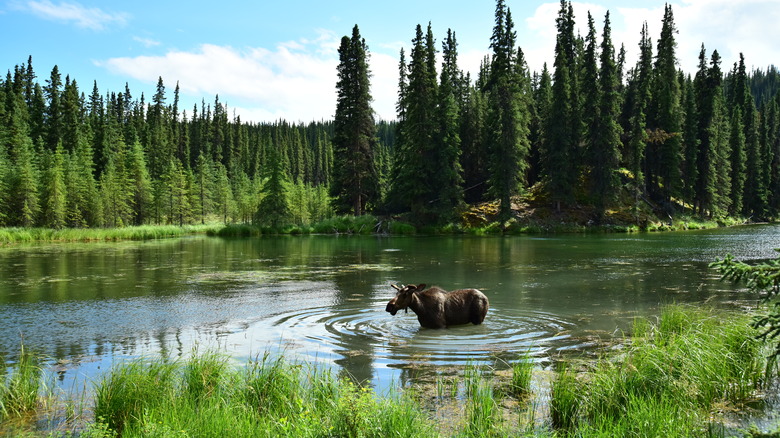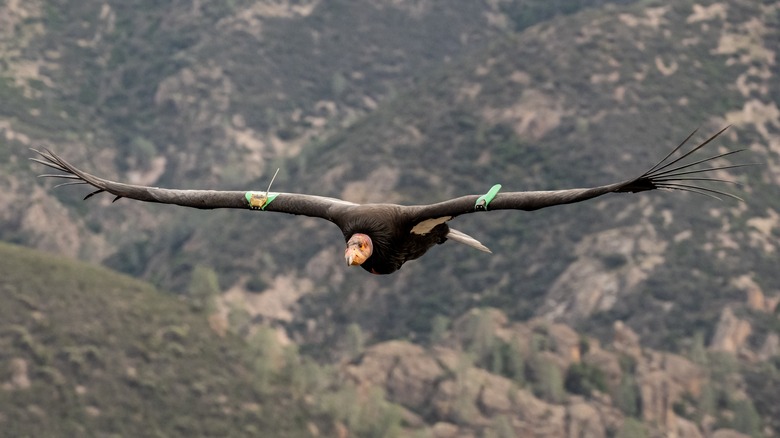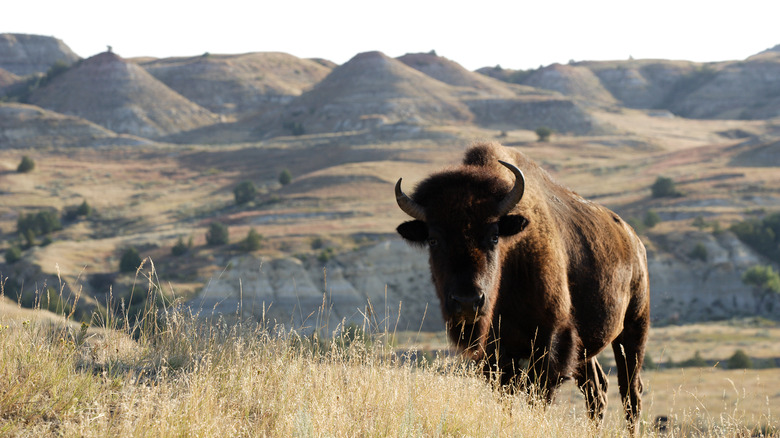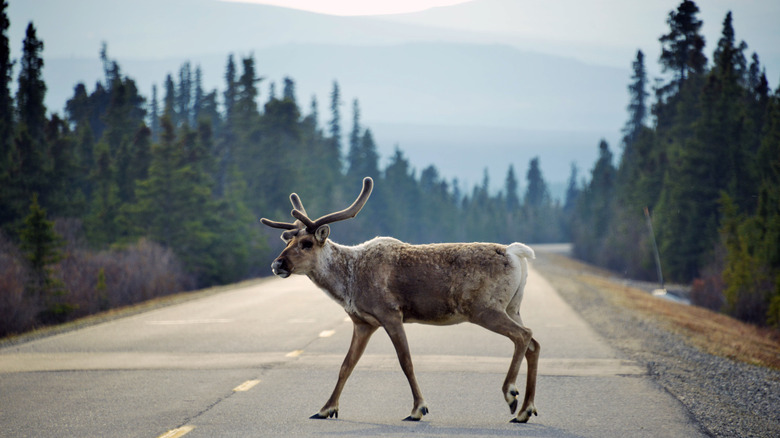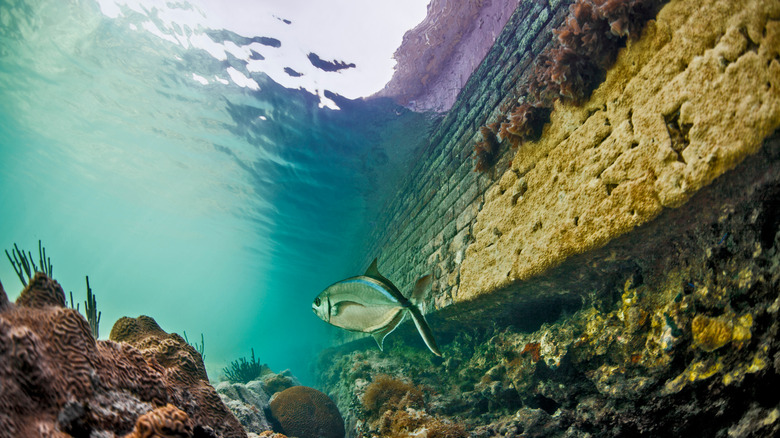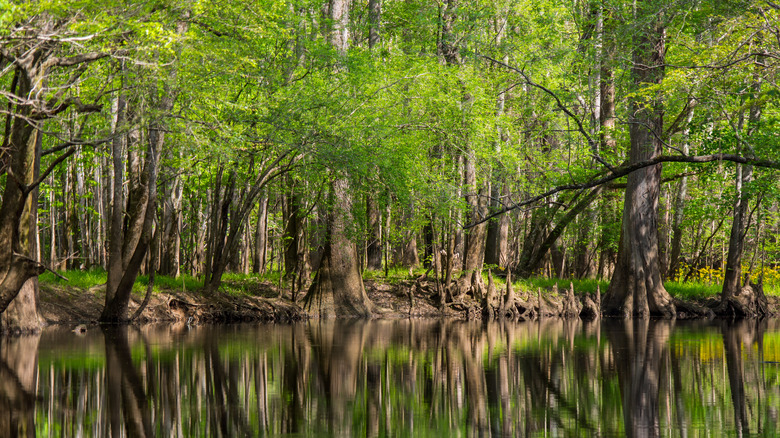US National Parks To Visit If You Want To Avoid Crowds And Admire Wildlife
When President Ulysses S. Grant designated Yellowstone as a national park in 1872, it became the first national park in the United States and the second nationally protected park in the world. According to the act that established Yellowstone, the land was to be: "dedicated and set apart as a public park or pleasuring-ground for the benefit and enjoyment of the people."
There are now more than 400 nationally protected lands across the United States, and there are 63 official national parks across the country from parks on islands and beaches to those on remote mountaintops. They're designed to provide people with greater cultural and historical knowledge about the area as well as provide opportunities for outdoor adventure, and as such, they are visited by millions of people every year. At some of the most popular parks, the crowds have become so intense that they've implemented required timed entry reservations for certain peak times. While these measures are designed to help keep the parks open for sustainable enjoyment by as many people as possible, you might be interested in skipping some of the overwhelming crowds with your next national park visit. Here are five national parks where you'll enjoy stunning natural scenery and get a chance to see wildlife in their natural habitat, and you'll be doing so among far fewer people. Keep in mind in all of these destinations that wildlife can be unpredictable, and while these parks provide a great chance of seeing wildlife, you just never know.
Pinnacles National Park is home to California condors
Pinnacles National Park is one of California's least visited national parks, often overshadowed by Yosemite National Park and Joshua Tree National Park. But this park in the eastern Salinas Valley of Central California, around a 2.5 hour-drive from San Francisco, is a paradise for outdoor enthusiasts. It was first established as a national park in 2013, and it was some 23 million years before that multiple volcanoes erupted to create the park's towering rock spires and crags.
What makes Pinnacles so particularly special is that it's a habitat for the endangered California condor — there were once just 22 of the birds on the planet, and now at least that many live in the park. If you want a chance to see North America's largest bird, head to the High Peaks region near sunset and sunrise. Condors can have wingspans up to 9.5 feet, and they have distinctive white markings on the underside of their wings that can be seen in flight. Along with condors, you can see golden eagles, turkey vultures, California quail, hummingbirds, and American kestrels.
As for mammals, you'll likely see black-tailed deer and rabbits, and you may get a chance to see some of the 14 different species of bat in the park. They especially like the park's caves, and the Bear Gulch caves are closed during late spring and early summer for the bats to raise their babies.
Theodore Roosevelt National Park has herds of bison, mule deer, and elk
In 1883, Theodore Roosevelt first visited the badlands of North Dakota to hunt bison. While there, he wrote, "I grow very fond of this place, and it certainly has a desolate, grim beauty of its own, that has a curious fascination for me," per the Theodore Roosevelt Center. In 1978, that land that Roosevelt fell in love with became an official national park bearing his name, and it still has the fascinating beauty that drew Roosevelt to it as well as some of the same wildlife.
Theodore Roosevelt National Park is home to herds of American bison, and you can often see these majestic mammals from the roads and campgrounds. While bison may seem relaxed as they graze, they are fast, agile, and will use their horns as protection as needed. Give them a wide berth of at least 25 yards, even more during the mating season — around mid-July to September.
Along with bison, you can see mule deer throughout the park, and in the South Unit, you have a chance to see elk as well as wild horses. The horses are more a cultural resource as compared to native wildlife, and there have been those who've called for their removal from park land. However, some think they should remain, at least in part because Roosevelt wrote about seeing wild horses when he visited the area. More rarely, you may see bighorn sheep and pronghorn antelope in the park as well.
Denali National Park & Preserve has Alaska's Big 5 of wildlife
Visiting Alaska is a bucket list trip for lots of people, and you can use Anchorage as a starting point to check out five of Alaska's 17 national parks. It's hard to narrow down one best park to visit for wildlife while you're in Alaska, but Denali National Park & Preserve gives you a chance to see all of Alaska's "Big 5" species — bear, moose, caribou, Dall sheep, and wolves.
Denali National Park & Preserve was created in 1917 specifically to protect the area for wildlife, the first national park for that purpose. The park was expanded in 1980, and it's now more than 6 million acres and includes the highest point in North America — 20,310-foot-tall Denali. When it comes to spotting wildlife, the National Park Service website recommends taking a bus tour with a naturalist/driver along Denali Park Road. If you're not driving, you don't have to keep your eyes on the road, and the naturalist on-board can tell you more about what you're seeing.
Several spots near the start of Denali Park Road are good for spotting moose, and as you make your way farther into the park, there are places where caribou and Dall sheep are known to hang out. You can even see bears and potentially wolves from the road. Keep in mind that bears and wolves will be much harder to spot and likely much farther away, no matter where you are, so bring binoculars.
Dry Tortugas National Park has a number of turtle nesting sites
Only 84,000 people visited Dry Tortugas National Park in 2023, making it one of the 10 least visited national parks. It's about 80 nautical miles west of Key West, Florida, and it's only accessible by seaplane or by boat. There is a daily ferry from and to Key West to get you to the park, and the ticket includes rental gear for snorkeling. Book early — only a few hundred spots are available and they sell out quick.
The 100-square-mile park is mostly open water, but it does include the massive Fort Jefferson on Garden Key, originally built and used in the mid- to late-1800s, along with six other small sand and coral islands. From the fort, you have a chance to see the five species of turtles that can be found at Dry Tortugas — they're what gave the park its name. The park's beaches are the most active nesting sites in the Florida Keys, particularly for Green and Loggerhead turtles. You'll need your own boat to explore much of the park beyond Garden Key, but there are swimming and snorkeling areas near the fort where you can see plenty of tropical fish amid the coral reef as well as a chance to see turtles.
The area is also sensational for birders, particularly during the spring and fall migrations. More than 300 species have been spotted here, including nesting populations of the sooty tern, magnificent frigatebird, and masked booby.
South Carolina's Congaree National Park is rich in biodiversity
Congaree National Park is less than 20 miles from downtown Columbia, South Carolina, but it only gets around 250,000 visitors a year. The area preserves some of the country's last stands of old growth, hardwood floodplain forest. Within this unique ecosystem, you can find all sorts of wildlife. One of the easiest ways to get a feel for the floodplain forest is to walk the approximately 2.4-mile Boardwalk Loop near the Visitor Center. It takes you through the forest, with trees up to 130-feet-tall, and you have a chance to see woodpeckers, turtles, snakes, and possibly even an alligator.
For another angle on the forest and for more chances at wildlife sightings, you can paddle a canoe or kayak up to 15 miles through the park on Cedar Creek — take it on your own or with a guided tour. Keep an eye out for playful river otters and herons looking for food.
One of the coolest natural phenomena at Congaree is thanks to the synchronous fireflies that live there. Each year around mid-May to mid-June, the fireflies will flash together as they look for a mate. Parts of the park are shut to general visitation during this time, and a limited number of passes, obtained via lottery, are available for park access during the evenings to see the spectacle.
